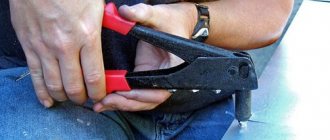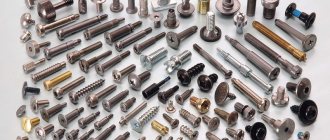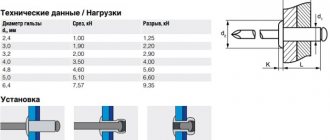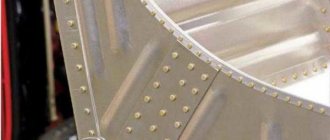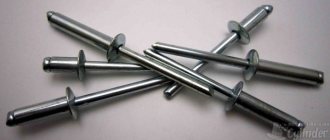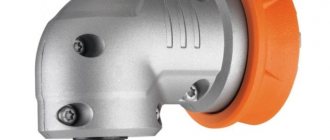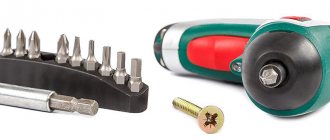Mastergrip rivet nuts are knurled to provide better grip and increased torque resistance once installed. The diameters of Mastergrip rivet nuts are adapted to the use of standard drill diameters.
Masterbolt is a rivet bolt and is available in 4 different thread sizes, each in 4 different lengths. All Masterbolts are 8.8 strength grade.
Threaded rivet technology involves the use of blind rivet nuts and rivet bolts, which have a dual function:
- A threaded channel is created in a thin sheet material. Rivet nuts – internal, rivet bolts – external.
- Can be used as blind rivets to join two sheets together.
The threaded rivet has the following advantages:
- easy to install into cylindrical material or parts (no need to cut a thread or weld a nut);
- blind rivet nuts have the same properties as threads in full-size material - this is possible due to the reinforced flange and elongated thread (compared to conventional bushings);
- a threaded rivet can be installed on one side (if the other side is inaccessible);
- The threaded rivet does not deform or discolor the material.
Technology of working with rivet nut:
- The rivet is pressed onto the tool's draw rod and then inserted into a pre-drilled hole in the workpiece.
- ?using the tool, the rivet-nut is pulled back and, deformed, is fixed in the hole. When joining two materials, a threaded rivet holds the materials together.
The installation technology for rivet-bolts is identical, only the bolt is screwed into the tool, and when installed it is an external thread.
Main types of rivet hardware
All rivets are of two types - threaded and blind, both types of rivets are installed due to deformation that occurs from the pulling force of a special tool - a riveter.
Blind rivets
Blind rivets
consist of a rivet body with a side (flange) and a pull rod, which, when pulled out, deforms the tail part of the rivet body, forming a reverse head that tightens the connected elements. After reaching the maximum traction force, the rod breaks off in a special separation zone, forming a reliable, permanent connection.
Threaded rivets
Threaded rivets
are one-component, and are used to create a strong collapsible connection, while threaded rivets are placed on only one sheet (surface), and the second sheet or material is attracted to the first by screwing a bolt, screw, etc. into the thread.
Threaded rivets are much more commonly used to hold multiple parts together, allowing threads to be created on thin material where threads cannot be cut. At the same time, they do not have any special restrictions in use and provide reliable fixation of all structural elements using a collapsible threaded connection of parts.
Nut samples of a threaded rivet have a thread on the inside, and bolt samples have a thread on the outer (protruding) part.
Product advantages
Essentially, threaded rivets are hybrids of traditional nuts. But they should not be confused with exhaust vents. They have advantages, including:
- ease of installation work;
- you can reliably connect components made from fragile materials or those that have insignificant thickness (rolled sheet metal), because the rivet nut will not lead to deformation;
- if the total thickness of the products exceeds the length of the fasteners, then a one-sided fixation is made, without a through passage, and the quality of work will not be low.
Reliability of connections is achieved due to the threads located on the inside of the nuts, and on the outside of the bolts.
Types of threaded rivets
The range is quite wide, there are many classifications of fasteners. Thus, they can have a flat or countersunk head, a nut or screw thread, a round or hexagonal leg (does not allow rotation in the mounting sockets). If you take into account the purpose, then there may be:
- electrically conductive;
- having increased force (possibly indentation or stretching);
- for highly hermetic connections;
- with enlarged heads;
- with inch thread application;
- with special marks (for visual identification);
- with vibration isolation.
This list can be continued, but it is worth noting that the domestic industry produces a wide variety of rivets for different cases.
Materials used for production
The fasteners in question may have different sides. To get regular connections, buy nuts that have standard flanges. If you need to get a slight gap between the parts, it is better to use hardware with reduced or hidden sides. It is worth considering that before installation begins, the procedure of countersinking the holes into which the rivets will be placed is performed.
Threaded rivet nuts can be produced from several types of metal, in particular:
- Carbon steel. For the production of universal products and the creation of standard connections.
- Made of stainless steel. Production of hardware that will be used at high temperatures or in places with high humidity levels.
- Made of aluminum. Such rivets are distinguished by their low weight and excellent anti-corrosion properties.
- Made of bronze. This metal is used if fasteners with low spark generation rates are needed.
In some cases, neoprene polymer may be used. Products made from it are called self-installing, because installation work does not require riveting tools.
Types of rivets
Before we figure out what types of rivets there are, let’s define that a rivet is a special fastener created to reduce production costs and make work easier. Special differences in hardware allow you to select the best option for specific fastenings.
Blind rivets open
The basic (standard) rivet is a fastener with a through hole. It is often confused with a hollow rivet, but the main difference is that a hollow rivet is installed with access from both sides, while a blind rivet can be installed on one side, much easier and faster. Speaking about areas of application, we can cite as an example the use of standard blind rivets when installing ventilated facades or assembling house structures made of metal frames. It all depends on the material and diameter of the rivet, but in any case the connection is quite strong and reliable. Installation features allow for minor differences in the diameter of the rivet and holes. The open type of blind rivets is the cheapest in the range.
Blind rivets closed
The main difference between closed blind rivets is the absence of a through hole; with their help, you can create a sealed structure. The body of the fastener makes it possible to “seal” the reverse side, creating a special head. Thanks to the tight fit, it becomes possible to install fasteners that prevent dust, dirt and moisture from entering the structure. The use of additional gaskets allows you to achieve a tight connection.
Closed rivets are suitable for the aviation and mechanical engineering industries.
Reinforced rivets
Reinforced rivets are also called monobolts. Necessary to create a super strong connection. Standard products are significantly inferior in terms of strength, tensile and shear forces. Another name is structural, since the created connection is not subject to vibration and has a wide range of uses. Reinforced models are used in industrial construction and mechanical engineering.
Flap rivets
By the name you can easily recognize the principle of operation of this rivet. During installation, the reverse side opens into “petals”, which, by bending, reduce the load at the attachment point, and in the case of very soft material, they can sink into it, strengthening the fixation, while almost not deforming it, but as if piercing it a little. Note that the head is not immersed in the material and remains visible. Flap rivets are needed for the installation of loose, delicate or soft materials. The head does not fall into soft material due to the fairly wide side and the small effort required for installation, which reduces the risk of cracks and deformation. An example is the connection of a smooth surface with a fibrous one, for example, wood, plastic or cellular polycarbonate.
Expansion rivets
Due to its special properties, the expansion rivet is used for the manufacture of furniture and decor; it allows connecting wooden and metal parts. Also suitable for fragile, loose and soft fabrics. The principle of operation is to form the reverse head in such a way that the load is distributed across the petals (partially divided into 3 parts). The main difference from the petal type is that the rivet is deformed and does not open completely.
Rivet nuts
Nut rivets are hardware that first has a flange, then a deformable part, and then a thread; the operating principle is similar to rivets, however, instead of a rod, there is an internal thread on the non-collapsible part.
To install a nut rivet, you need to drill a hole in the part to be fastened, screw the rivet onto the threaded part of the mandrel, which is inserted into the rivet gun and actually acts as a rod for the blind rivet, insert it into the prepared hole and retract the sleeve. The back part is deformed, forming a reliable connection with the inner surface; on the outside, the rivet is held by the side.
Multi-clamp rivets
Also types of blind rivets with an open body with a special design, which, unlike conventional blind rivets, provides multiple compression. This method of wedging the body provides high working loads to pull out.
Terminal rivets
Used for making contact connections, including creating an electrical circuit. How does a rivet work? The answer lies in the material: they are made of metals that conduct electric current (the rivet body is made of brass, and the rod is made of copper-plated steel). There are one- or two-terminal options. Terminal rivets are required to create a ground connection.
Plastic rivets
Rivet material may vary. Plastic hoods are made of polyamide, which means they provide a strong connection. In addition to the raw materials, they have a number of advantages:
- do not conduct electric current;
- not subject to corrosive effects;
- low cost.
Of course, plastic polyamide rivets are not suitable for fastening two metal plates. Used for plastic, fiberglass, cardboard structures associated with metal or other materials.
Cassette rivets
The newest type of rivets is cassette rivets. Today it is considered promising because the operator does not have to insert a single fastener each time. Cassette cartridges are presented in the form of a tape or rod for an entire magazine. A distinctive feature of the installation is that the rod does not break off, but is pulled, which significantly speeds up the installation process. One cassette contains up to 40 pieces. The special tool is not interrupted, but will automatically prepare the next batch. A bonus will be the ability to free up your second hand, which can be used to securely fix the knot.
Thus, it is impossible to single out a specific area of use of rivets in general. Each type is suitable for its own purposes, be it creating a children's playground or the largest business center. The only thing that is not in doubt is that rivets are a unique fastener that allows you to reduce installation time and cost.
Features of installation work
When you use mechanical special tools, significant physical effort will be required to obtain truly reliable connections of structural elements. The fact is that rivet nuts significantly counteract the tightening forces. A pneumatic riveter significantly simplifies the task , but its cost remains high.
If you have a special mechanical or pneumatic-hydraulic tool available, the installation process will be very simple:
- screwing the nuts directly onto the threaded rods in the riveter;
- the tool together with the hardware is turned until it stops in the hole made;
- the rod of the device is carefully pulled out, after which the fasteners are riveted independently;
- unscrewing the rod from ready-made connections.
Rivets: purpose and materials of manufacture
After we have examined in detail all the types of options on the market, we can confidently highlight several aspects of the purpose of hardware:
- those places where it is impossible to carry out welding work;
- overheating and deformation of the material structure are undesirable;
- increasing vibration resistance properties;
- the need to create a connection of increased strength.
Materials used for manufacturing:
- aluminium-magnesium alloys*;
- bronze;
- copper;
- Monel (an alloy of copper and nickel);
- stainless steel A2 or A4;
- Cink Steel;
- polyamide.
* the difference is only in the magnesium content, the higher the percentage of magnesium, the stronger, the least durable and cheapest Al (Mg1%) and the most durable which is used in blind rivets and then, as a rule, for Al (Mg5%) rods;
In some cases, combinations of these materials are used, for example, the rod may be from one alloy, and the rivet from another. Galvanized steel and aluminum are often combined. In this case, the definition of “combined” rivet is appropriate.
The principle of selecting rivets is compatibility, or better repetition, of the material, in terms of mechanical and physical properties, from which the elements being connected are made.
Another important selection criterion is susceptibility to galvanic corrosion. It manifests itself at the junction of dissimilar metals under high humidity, for example, during rain. If you are not sure how to choose rivets for a riveter, then you can use a special table of electrochemical potential. The effect of moisture will be on the more electronegative material.
When choosing a material, the following features must be taken into account:
- Ideally, choose an electropositive material for the rivet itself, so that corrosion occurs on an element that can be easily replaced;
- check compatibility using the electrochemical potential table;
- use a dielectric barrier, such as a gasket.
When purchasing rivets, it is also worth considering the operating temperature of the finished product. The fastener material and product must be matched to ensure the same thermal expansion as the temperature rises and falls. Ignoring the selection rules may lead to premature rust or other damage.
In addition to the basic elements, there are coated rivets. Powder paint is used for this, and the shade corresponds to the RAL color chart.
Rivet bolt
The rivet bolt has a dual function:
- Creates an external threaded channel in thin sheet material.
- A bolt rivet can be used as a blind rivet to join two sheets together.
The rivet bolt has the following advantages:
- easy to install into cylindrical material or parts (no need to cut a thread or weld a nut);
- the rivet-bolt has the same properties as the threads in the full-size material - this is possible due to the reinforced flange and elongated thread (compared to conventional bushings);
- a rivet-bolt can be installed on one side (if the other side is inaccessible);
- The rivet bolt does not deform or discolor the material.
The technology for installing a rivet-bolt is as follows: the bolt is screwed into the tool, and when installed it is an external thread.
Variety of types of rivet bolts
The rivet bolt is made of aluminum, galvanized and stainless steel. We offer rivet bolts with different types of heads: cylindrical, countersunk with a reduced skirt, countersunk, as well as hexagonal to prevent rotation.
Rivet bolt is used:
- in the automotive industry: installation of rear-view mirrors, spoilers, dashboard, trailer, repair work;
- in construction: elevators, kitchens, swimming pools, bridges;
- in ventilation and air conditioning systems;
- in the shipbuilding industry;
- when installing window frames and assembling furniture;
- and much more…
Advantages and disadvantages
Today, rivets are considered a universal fastener that provides reliable fastening of sheet materials. In addition, hardware has a number of other advantages.
Advantages of metal rivets:
- the connection is resistant to strong mechanical loads, vibration and shock;
- the possibility of durable fastening in places where it is impossible to use threaded options or welding equipment;
- Blind and threaded rivets are easy to install;
- A wide choice of materials reduces the risk of corrosion.
Disadvantages of rivets:
- the need to purchase special equipment for installation - a riveter;
- if the diameter of the hole and the rivet are not matched, the strength of the connection is weakened;
- impossibility of end-to-end connection without the use of additional pads;
- noisy installation of options with a closing head.
At the same time, the disadvantages of metal rivets are not always a contradictory factor. The noise can be tolerated, and overlapping installation is one of many options for assembling the structure.
Types of rivets and the applicability of such fasteners today
This method of fastening parts is permanent and competes with the most common methods of joining metal parts - welding and gluing parts. Indeed, often these two approaches are inappropriate, because the surfaces cannot withstand high temperatures or must remain mobile, or the part must not undergo structural metamorphosis, as happens under the flame of a burner. This is especially critical if the parts being fastened are made of different materials; their behavior can be unpredictable under welding conditions.
The connection itself may look different, and this is influenced not only by the types of rivets, but also by the future operating conditions of the product. Just a strong fastening will withstand force loads (shocks, vibrations), but at the same time it is not burdened with tightness, but tight riveted joints should not allow water and air to pass through, however, this property has limits, this is possible only at low pressures. The quality of the seam is also affected by its row; quite often they resort to multi-row arrangements of rivets, and they can be placed in a chain or staggered manner.
The assembly work can be done manually, as has been done before, or you can use special tools. Today, their choice is quite large, ranging from manual to electric riveters. But it all comes down to one algorithm: a hole is made in the parts, a rivet is inserted there, and fixation is performed using a certain technique. The last stage is precisely the basis for the classification of rivets, which today is still expanding.
The advantages of a rivet connection are non-aggressiveness, both mechanical and chemical, the ability to fasten dissimilar materials, not only different in nature, but also in thickness, without provoking mechanical stresses in the structure. But many are confused by the labor intensity, which, even with the use of a special tool for rivets, requires preliminary making of holes, and subsequent worries about sealing the resulting seams become an additional headache. And in mass production, this method of fastening is accompanied by strong, prolonged noise, which negatively affects the health of the workforce.
Rivet material
Depending on the material from which the rivets are made, the strength and reliability of the connection will differ. The most common options:
- aluminum. Such fasteners can reduce installation costs and, moreover, this material is fireproof (therefore, aluminum rivets are used in air ducts; when aluminum is struck by foreign objects or debris, a spark does not occur);
- stainless steel. In addition to reducing the risk of corrosion, they have high strength;
- galvanized hardware. Suitable for attaching sheet materials to other structures, for example, during the installation of gutters or metal fences.
Diameter and length
Of course, if we are talking about the independent use of rivets at home, then turning to GOST standards will be unnecessary. It’s another matter if this fastener is used in production. Regulation of the size of blind rivets to create unbreakable connections is indicated in the standards:
- GOST R ISO 15974-2005 and GOST R ISO 15973-2005 - standards for blind rivets;
- GOST R ISO 15979-2017 - blind rivet standard steel/steel side;
- GOST R ISO 15977-2017 - blind rivet standard aluminum/steel flange;
- GOST R ISO 15980-2017 - blind rivet steel/steel;
- GOST R ISO 15981-2017 - blind rivet standard aluminum/aluminum side;
- GOST R ISO 15978-2017 - blind rivet aluminum/steel;
- GOST R ISO 14488-2005 – description of the standard for “blind” rivets.

